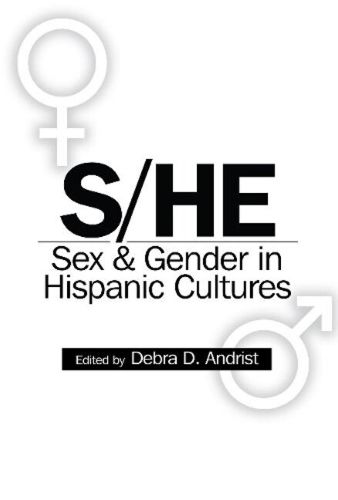Readings Newsletter
Become a Readings Member to make your shopping experience even easier.
Sign in or sign up for free!
You’re not far away from qualifying for FREE standard shipping within Australia
You’ve qualified for FREE standard shipping within Australia
The cart is loading…






Hierarchies and disparities based on sex and gender have characterized nearly all hominid societies over almost the entire world of cultures since time immemorial. Nearly without exception, those disparities have created a hierarchy of male over female. Languages reflect that. For example, in the English language, the word for the fe/male sex is based on the word male; man is the root for wo/man; and indeed man is generally considered the generic for all members of the species. Spanish, on the other hand, does differentiate hombre from mujer, but the masculine is still considered the root and the generic. For the purposes of S/HE: Sex & Gender in Hispanic Worlds, sex refers to biological differences, i.e., reproductive organs and secondary sexual characteristics, which are perceived as oppositional yet collaborative, in the propagation of the species. Gender, on the other hand, refers to culturally-specific expectations and/or stereotypes in terms of an individuals or groups self (re)presentation and/or behaviors. The main title, S/HE, is a nod to the arguably-gender-neutral third-person singular pronoun from the 1960s inclusive English-language movement in the United States, which was concurrent with equal rights movements in terms of race, ethnicity, sex and gender. This book focuses on sex and gender issues in the Hispanic worlds, paying homage to all who do not fit within the strict parameters of previous definitions by including broadened descriptions of identity, both biological and social, and by highlighting aspects of traditional and non-traditional lifestyles as portrayed in art and literature.
$9.00 standard shipping within Australia
FREE standard shipping within Australia for orders over $100.00
Express & International shipping calculated at checkout
Hierarchies and disparities based on sex and gender have characterized nearly all hominid societies over almost the entire world of cultures since time immemorial. Nearly without exception, those disparities have created a hierarchy of male over female. Languages reflect that. For example, in the English language, the word for the fe/male sex is based on the word male; man is the root for wo/man; and indeed man is generally considered the generic for all members of the species. Spanish, on the other hand, does differentiate hombre from mujer, but the masculine is still considered the root and the generic. For the purposes of S/HE: Sex & Gender in Hispanic Worlds, sex refers to biological differences, i.e., reproductive organs and secondary sexual characteristics, which are perceived as oppositional yet collaborative, in the propagation of the species. Gender, on the other hand, refers to culturally-specific expectations and/or stereotypes in terms of an individuals or groups self (re)presentation and/or behaviors. The main title, S/HE, is a nod to the arguably-gender-neutral third-person singular pronoun from the 1960s inclusive English-language movement in the United States, which was concurrent with equal rights movements in terms of race, ethnicity, sex and gender. This book focuses on sex and gender issues in the Hispanic worlds, paying homage to all who do not fit within the strict parameters of previous definitions by including broadened descriptions of identity, both biological and social, and by highlighting aspects of traditional and non-traditional lifestyles as portrayed in art and literature.